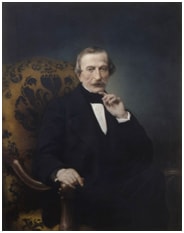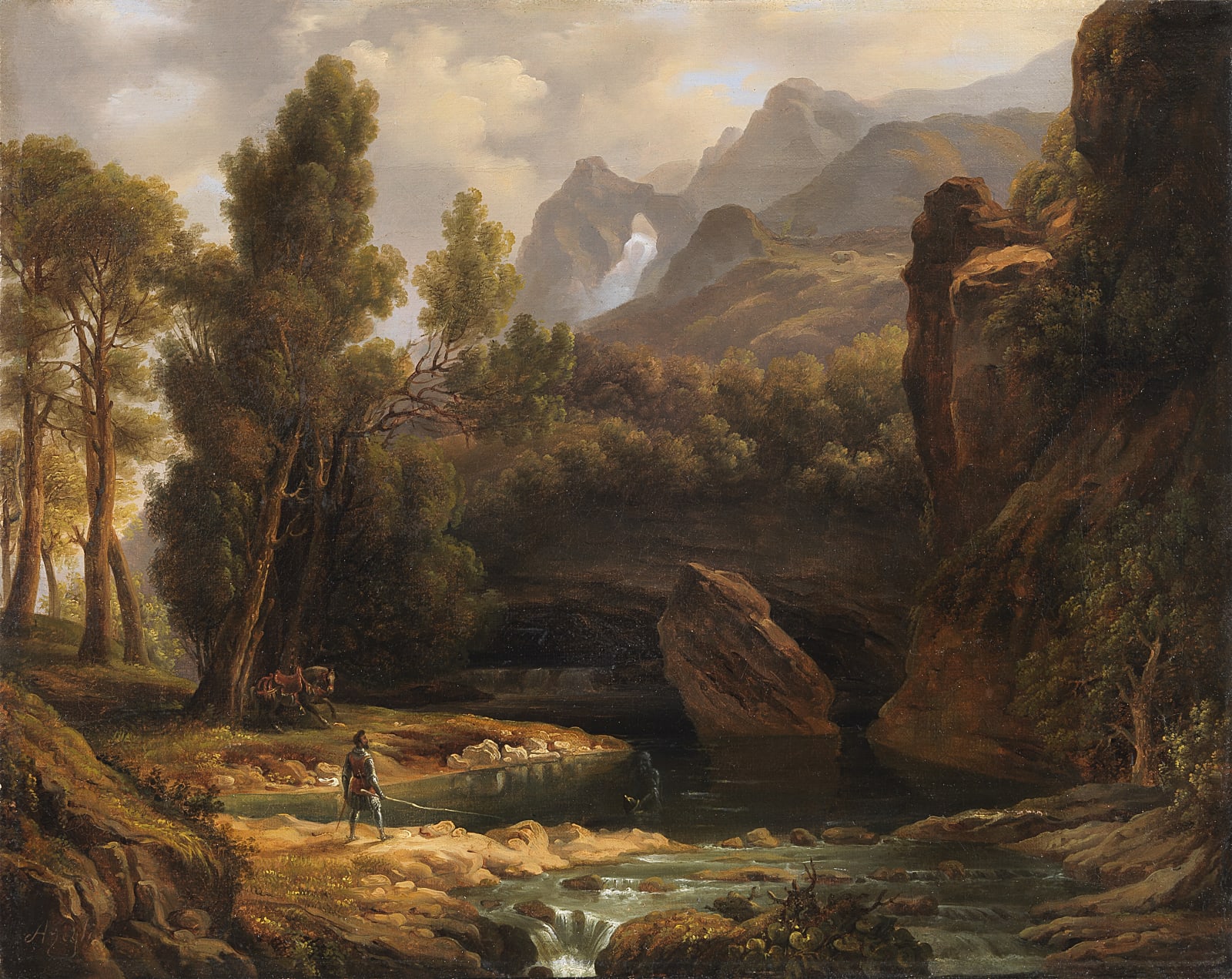Massimo d'AZEGLIO 1798-1866
Literature
Literature: Massimo d’Azeglio e l’invenzione del paesaggio istoriato, exhibition catalogue ed. V. Bertone, Turin 2002, entry. no.64 p.247.
The painting presented in this paper is a smaller version of a celebrated work entitled Ferraù Retrieving Argalia’s Helmet larger in size (120 x 166.5 cm) and now in the Galleria d’Arte Moderna in Brescia (inv. no. 349).
Count Paolo Tosio Martinengo purchased it at the Milan exhibition of 1834 (see Massimo d’Azeglio pittore, 1998, exhibition catalogue, entry no. 25) and subsequently presented it as a gift to the city.
The subject, based on an episode recounted in Canto I of Ariosto’s Orlando Furioso, narrates the misadventures of the pagan knight Ferraù who, as he prepares to retrieve a helmet which he had dropped in the river, sees the ghost of his friend Argalia bringing the helmet towards him (Orlando Furioso, Canto I, Octaves 24, 25, 26).
D’Azeglio’s painted version of the scene proved to be so popular that he painted several variants (of which this is one) to meet the demand from his numerous patrons.

Francesco HAYEZ
Portrait of Massimo d’Azeglio, oil on canvas, 1864,
Pinacoteca di Brera, Milan
The picture was painted in the second half of the 1830s, probably some time between 1834 when the Brescia version was painted and 1841, the enigmatic date appearing on the back of the stretcher frame informing us that the picture transited through Genoa in that year, which we can thus take as a definite terminus ante quem.
The picture was painted when d’Azeglio was still in Milan, at the very height of his career as an artist, before he went on to become involved in political affairs in Turin.
The subjects d’Azeglio affected in those years are imbued with the spirit and taste of the Romantic era, his landscapes enlivened by literary and historical themes, as in this painting. Nature appears to tower over the figures in keeping with the precepts of Romanticism; the natural element merging with the figures and the leaves on the trees rendered with rapid brushstrokes and a warm, delicate palette were characteristic features of d’Azeglio’s work.
JOIN OUR MAILING LIST
Subscribe to our mailing list in order to receive news on new acquisitions, exhibitions, special previews and more!
* denotes required fields
We will process the personal data you have supplied to communicate with you in accordance with our Privacy Policy. You can unsubscribe or change your preferences at any time by clicking the link in our emails.
